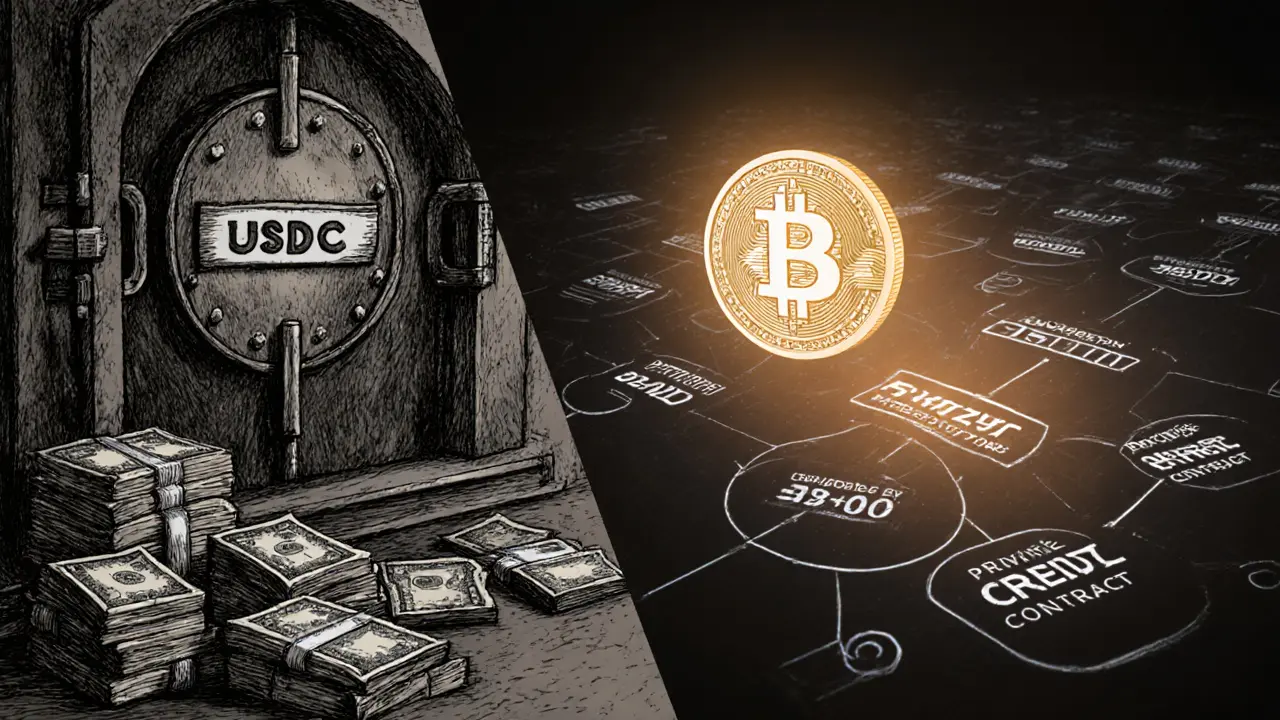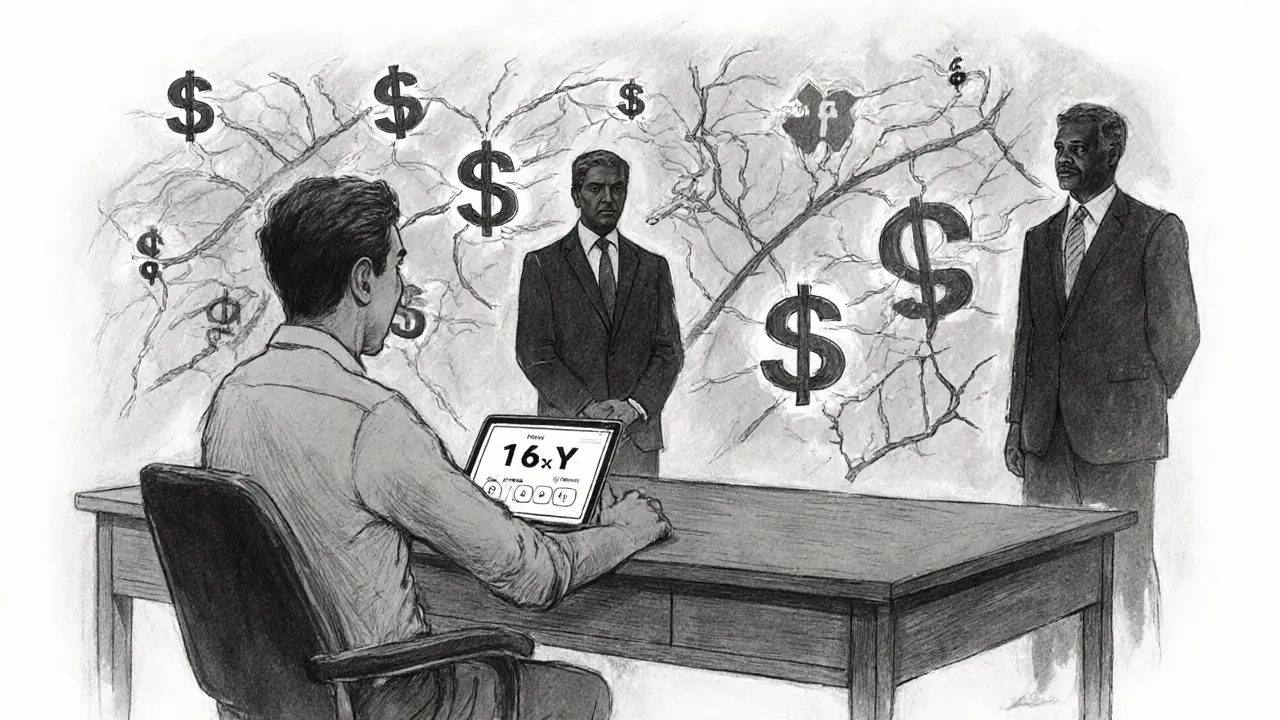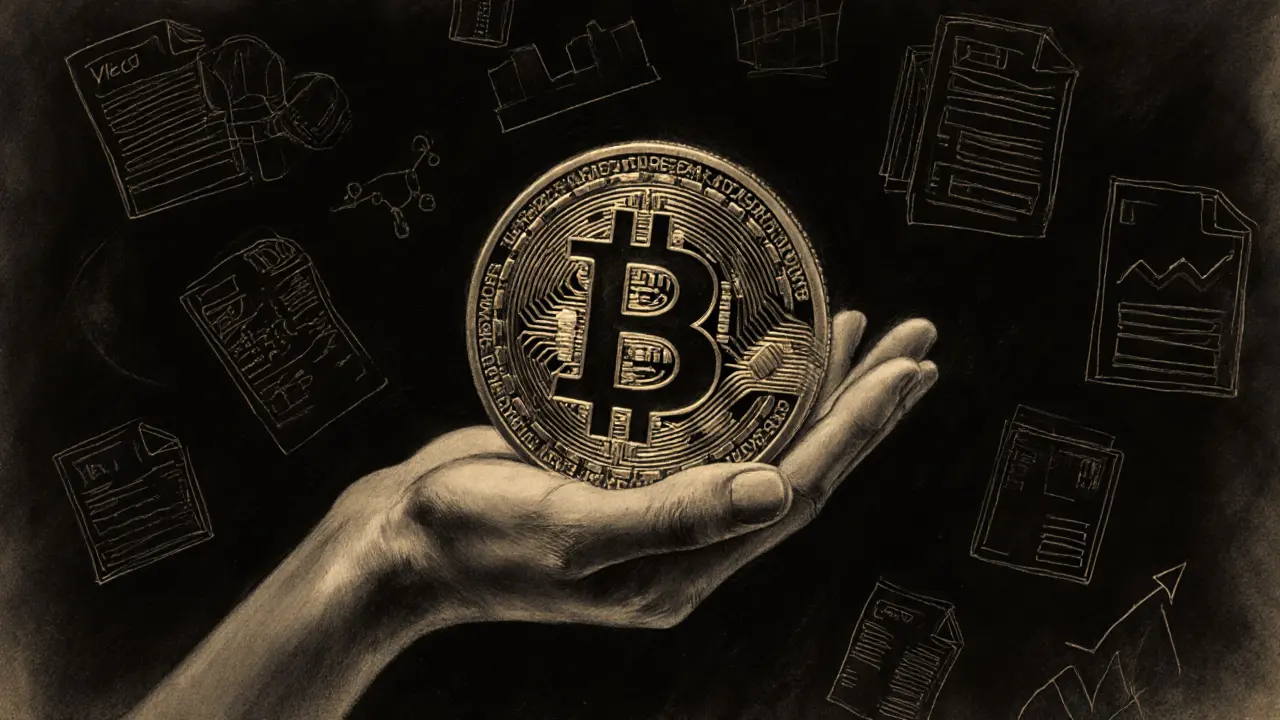USDZ Yield Calculator
Stake Your USDZ
Your Earnings
Current APY: 16% (as of late 2024)
Note: APY is variable and based on underlying loan performance.
Enter your stake amount and duration to see your projected earnings
USDZ isn’t another stablecoin backed by cash in a bank account. It’s backed by real loans - private credit deals made to U.S. businesses, packaged into digital tokens. Launched in early 2024, Anzen Finance’s USDZ is trying to solve a quiet but growing problem in DeFi: how to bring real, income-generating assets onto the blockchain without sacrificing stability.
How USDZ Works: Backed by Loans, Not Cash
Most stablecoins like USDC or USDT keep their $1 value by holding actual U.S. dollars in bank accounts. USDZ does something different. It’s backed by a portfolio of asset-backed private credit securities. These aren’t speculative crypto loans. They’re institutional-grade loans made to small and mid-sized businesses in the U.S. - things like equipment financing, supply chain loans, or invoice factoring. These loans generate interest, and that interest flows back into the USDZ system. The team behind Anzen includes veterans from BlackRock, Goldman Sachs, and JP Morgan. They’ve spent years working with real-world credit markets and started building this system back in 2018. Their goal? To bring the $7 trillion U.S. private credit market on-chain. That’s not a guess - it’s a real market size backed by data from the Federal Reserve and industry reports. Unlike USDC, which earns zero yield, USDZ pays interest. Through staking your USDZ as sUSDz, users can earn around 16% APY. That’s not a gimmick. It comes directly from the interest paid by the businesses borrowing the money behind the scenes. The yield isn’t created by printing more tokens or incentivizing traders - it’s real economic activity.Price Stability: How USDZ Stays at $1
USDZ aims to maintain a 1:1 peg with the U.S. dollar. But it doesn’t do this by redeeming tokens for cash. Instead, it uses market mechanics. If USDZ drops below $1 - say, to $0.98 - arbitrageurs buy it up. They know it’s backed by assets worth more than $1, so they buy the discount, hold it, and wait for the price to return to $1. When USDZ trades above $1 - say, $1.02 - Qualified Market Makers can mint new USDZ by depositing USDC into the protocol at a 1:1 ratio and sell it on the open market. This creates supply pressure and brings the price back down. This system relies on liquidity and market participants acting in their own interest. It’s not perfect. During extreme market stress, like a crypto crash or bank run, there’s no direct redemption guarantee like USDC offers. That’s a trade-off. You’re not getting a bank-backed dollar. You’re getting a token backed by loans - and the yield that comes with it.Market Data: Where USDZ Stands in October 2025
As of late 2024, USDZ had a market cap of around $115 million and a circulating supply of 115.8 million tokens. Trading volume hovered around $57,000 per day across 28 markets - modest compared to USDC’s $20 billion daily volume. The price has stayed mostly within $0.98-$1.00, showing resilience even during broader crypto volatility. It’s not a top 10 stablecoin. It’s not even in the top 100 by market cap. But it’s growing. Compared to other RWA-focused projects like Ondo Finance ($1.8B TVL) or Centrifuge ($289M TVL), USDZ is smaller - but it’s one of the few with direct staking yield built into the token itself. The token runs on Ethereum and is available on Layer-2 networks like Arbitrum, Base, Blast, and Manta Pacific. That means lower fees and faster transactions than using Ethereum mainnet. You can trade USDZ on decentralized exchanges like Uniswap and SushiSwap, and as of October 2024, it became available through Binance’s Web3 Wallet - making it easier for new users to buy without leaving the familiar Binance interface.
How to Get and Use USDZ
To get USDZ, you need a Web3 wallet like MetaMask or Coinbase Wallet. Then go to rwa.anzen.finance and connect your wallet. You can mint USDZ by depositing USDC as collateral. The protocol requires overcollateralization - meaning you put in more than $1 worth of USDC to get $1 of USDZ. This protects the system if the underlying assets lose value. Once you have USDZ, you can:- Stake it as sUSDz to earn 16% APY
- Use it in DeFi lending protocols like Aave or Compound (where supported)
- Provide liquidity on DEXs for trading fees
- Hold it as a yield-bearing alternative to USDC
Pros and Cons: Is USDZ Right for You?
Pros:- Real yield from real assets - not protocol incentives
- Stable price with historical tracking near $1
- Backed by experienced team with institutional credit background
- Operates on multiple Layer-2 chains for lower costs
- Part of the growing RWA trend - $16 trillion market by 2030
- No direct redemption to USD - you’re dependent on market buyers
- Low liquidity compared to USDC/USDT - slippage on large trades
- Limited exchange availability - not on Coinbase or Kraken yet
- Transparency on underlying loans is still limited - no public audit of every asset
- New project - no track record through a full market crash

Who’s Using USDZ? And What Do They Say?
User feedback is still limited because USDZ launched in 2024. But early adopters are mostly intermediate-to-advanced DeFi users. An informal Telegram poll showed 65% of users had used DeFi protocols for over a year. On Reddit, users say: “Finally, a stablecoin that earns yield from real business, not just tokenomics.” On Discord, people debate whether the 16% APY is sustainable long-term. On Trustpilot, one user complained: “Hard to buy without using DEXs. Slippage kills small trades.” The Anzen team responds to questions on Telegram and Discord within 2-4 hours. They’ve published detailed documentation, but it’s technical. There are YouTube tutorials (like “DeFi Simplified” with 8,400+ views) that walk you through the minting and staking process.The Bigger Picture: RWA and the Future of Finance
Anzen Finance isn’t just a crypto project. It’s part of a quiet revolution: bringing real-world assets - mortgages, bonds, invoices, loans - onto blockchains. This isn’t sci-fi. BlackRock now tokenizes bonds. JPMorgan runs its own blockchain settlement system. The global RWA tokenization market is projected to hit $16 trillion by 2030. USDZ is one of the first to combine that with a stablecoin that pays yield. Other projects tokenize real estate or commodities. Anzen chose private credit because it’s liquid, regulated, and generates consistent cash flow. U.S.-based assets also help avoid complex international regulations. The biggest risk? Regulation. The SEC hasn’t clearly defined how tokenized private credit securities should be treated. If they’re classified as securities, Anzen might need to restrict access to accredited investors only - which would limit its growth.Final Thoughts: A Niche But Powerful Tool
USDZ isn’t for everyone. But for those who understand DeFi and want to earn real yield without gambling on volatile crypto, it’s one of the most compelling options today. It’s not a bank. It’s not a traditional stablecoin. It’s something new: a dollar-pegged token backed by loans that pay interest. The market cap is small. The liquidity is thin. The team has credibility. The concept is backed by trillions in real-world assets. If the regulatory environment stays favorable and the underlying loans perform as expected, USDZ could grow into a major player in the next phase of DeFi - where finance isn’t just digital, but truly real.Is USDZ backed by U.S. dollars like USDC?
No. Unlike USDC or USDT, USDZ isn’t backed by cash held in bank accounts. Instead, it’s backed by a portfolio of private credit loans made to U.S. businesses - things like equipment financing and invoice financing. These loans generate interest, which funds the 16% APY paid to stakers. The value of USDZ comes from the performance of these real-world assets, not from dollar reserves.
Can I redeem USDZ for U.S. dollars?
Not directly. There’s no built-in mechanism to exchange USDZ for U.S. dollars. To get cash, you must first trade USDZ for USDC or ETH on a decentralized exchange, then convert that to fiat on a centralized exchange like Coinbase or Binance. This adds steps and potential slippage, making USDZ less practical for daily cash needs.
Is USDZ safe? What happens if the loans default?
USDZ is overcollateralized - meaning the value of the underlying loans exceeds the total USDZ supply. The team uses institutional-grade underwriting standards and partners with a licensed firm with over $1 billion in past credit deals. If some loans default, the portfolio’s diversification and overcollateralization buffer the loss. But unlike USDC, there’s no guarantee of full redemption if widespread defaults occur. It’s lower risk than crypto, but higher risk than a bank-backed stablecoin.
How do I earn 16% APY with USDZ?
You stake your USDZ as sUSDz through the Anzen Finance dApp. Once staked, you earn a share of the interest generated by the private credit loans backing the token. This yield is distributed automatically. The 16% APY is not guaranteed long-term - it can change based on loan performance and market conditions. As of late 2024, it has remained stable, but users should monitor updates from the Anzen team.
Where can I buy USDZ?
USDZ is available on decentralized exchanges like Uniswap, SushiSwap, and Curve, across Ethereum and Layer-2 networks like Arbitrum and Base. As of October 2024, it’s also accessible via Binance’s Web3 Wallet, allowing users to buy USDZ directly with a credit card or bank transfer without leaving the Binance app. It’s not listed on Coinbase, Kraken, or other major centralized exchanges yet.
Is USDZ regulated?
Anzen Finance operates with a licensed partner that handles the underlying credit assets under U.S. financial regulations. However, USDZ itself is not registered as a security with the SEC. The regulatory status of tokenized private credit is still evolving. The SEC has signaled increased scrutiny on RWA projects, so future regulations could restrict who can buy or hold USDZ - potentially limiting it to accredited investors only.
How does USDZ compare to other RWA stablecoins like Ondo’s USDY?
USDZ and USDY both use private credit as backing, but USDZ is built as a staking stablecoin with direct yield. USDY doesn’t pay yield on the token itself - users must use it in other DeFi protocols to earn returns. USDZ also has broader Layer-2 support and lower entry barriers for staking. USDY has a larger TVL ($1.8B vs. $115M), but USDZ offers a simpler, more direct way to earn yield on a stablecoin.

